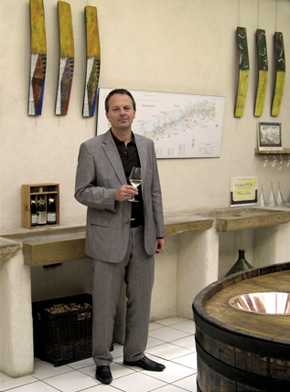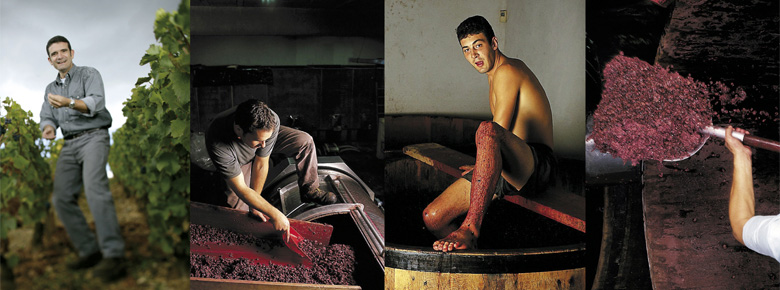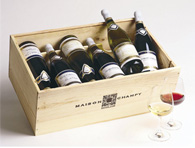
Winegrower Burgundy
Maison ChampyThe Maison Champy is the oldest wine merchant in the Burgundy region. In 1720, Edme Champy set off to find markets abroad. He succeeded in finding customers in the Austrian Netherlands (now Belgium). Edme’s successor became friends with none other than Louis Pasteur, who, in collaboration with the Maison Champy, carried out research work on wine. Champy’s long history now rests on the shoulders of Pierre Meurgey. The company was given a new lease of life in 1990 by two expert professionals, Pierre’s father, Henri Meurgey and Pierre Beuchet. Now the company’s list of Burgundy wines is extremely impressive: from Chablis to Mâcon, from regional appellations to Great Growths, as well as all the village appellations and First Growths. The Maison Champy owns a total of 17 hectares, with 24 different appellations, and also deals with wines made on domains by winegrowers under contract. 500 000 bottles are produced each year with the name Maison Champy.

Pierre Meurgey


Maison CHAMPY
5, rue du Grenier à Sel
BP 53
21202 BEAUNE CEDEX
Tél. 03-80-25-09-99
Fax 03-80-25-09-95
Pierre Meurgey: No, quite to the contrary; we are most keen to make sure that the individual characteristics of each named-place (called a “climat” in Burgundy) can be discerned. The high standards of quality in our profession are perceived as a type of craftsmanship. For our customers, this guarantee ensures their loyalty to our wines. Our success is linked to the fact that we seek to provide balance and characteristic features in each of our wines. We aim to convey the qualities of the wine’s terroir, not impose our own style.
RT: Do you have a special method?PM: Yes and no. We keep our yields low so that we can maximise the terroir expression, and we do not necessarily seek concentration, but minerality. We use a very small quantity of fertiliser or none at all; the vines are pruned short and if necessary we carry out green harvesting. We have done some tests with biodynamic methods; the result is interesting, because the wines are more expressive. Our winemaking techniques are far from being standard. They are adjusted to the characteristics of each “climat” and to the conditions of the vintage. Maceration at low temperature for four or five days enables us to extract colour and fruitiness. Fermentation is launched by indigenous yeast. Apart from regional appellations, for which we use stainless steel vats, fermentation as well as maturation is done in barrels (20% to 100% in new barrels, depending on the appellation). As concerns corking, we try to adapt ourselves to market demands, but cork is still used in majority.
RT: Who are you main customers?